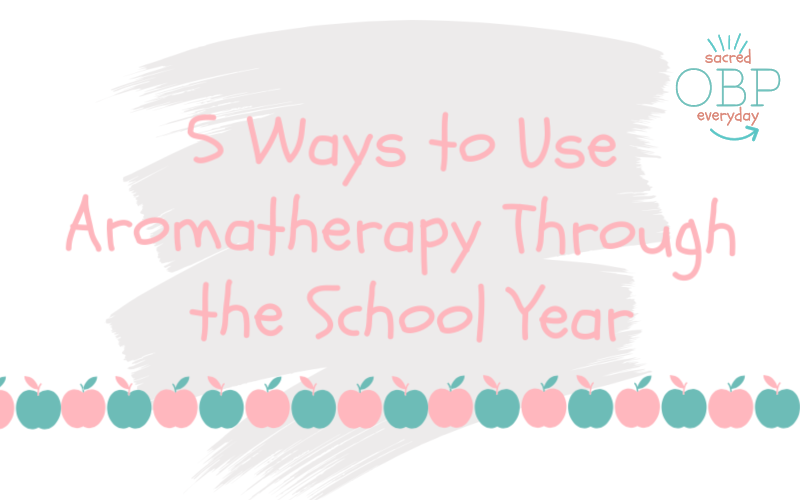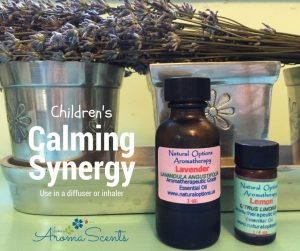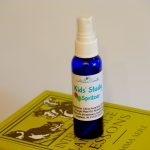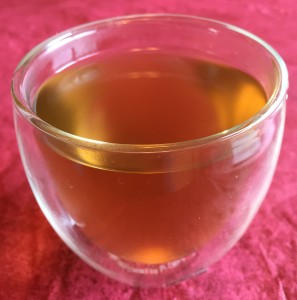I saw the familiar yellow school bus in our neighborhood this morning, definitely heralding the end of summer—at least for the academic calendar. Back to school is always an exciting time for kids and parents alike, albeit for different reasons! Whether your children are just starting their school career, are somewhere in the middle, or are heading toward graduation, aromatherapy can support a wellness lifestyle throughout their entire year. Let’s look at some possibilities of how to do that.

Safety First
In discussing children and aromatherapy, I first want to set a few important guidelines.
- Always keep your essential oils out of the reach of children. Cute tiny bottles may entice a child to take a drink, but most essential oils are poisonous to consume undiluted.
- Do not use essential oils on premature babies. They have high skin permeability, so it is not recommended.
- Remember, essential oils are highly concentrated, at 75%-100% stronger than the herb of the same name. So the rule for children (and adults) is to dilute, dilute, dilute! We’ll discuss proper amounts in this post.
- Do NOT let children ingest essential oils unless they are under the supervision and advice of a doctor or certified clinical aromatherapist with years of experience in this practice.
- For children under 5 years of age, use aromatherapy products for acute conditions such as illnesses, skin conditions, injuries, infections, and emotional upsets.
- Do not use dermal (skin) applications of aromatherapy products everyday on children 5 and under. There is the possibility of creating sensitization and increased likelihood of developing allergies. Olfaction and inhalation is the preferred method of application unless you are treating an acute condition.
- Do not place undiluted essential oils or highly concentrated blends of oils around the nose or mouth of children under age 2. This could cause respiratory distress.
- Keep in mind that hydrosols are gentler to use with children than essential oils.
- Avoid the use of menthol or 1,8 cineole-rich essential oils until the age of 2, such as cardamom, Niaouli, eucalyptus, and peppermint (avoid until the age of 30 months).
Now that we understand a few basic safety rules, let’s consider some ways you can choose to use aromatherapy for wellness throughout the school year. We’ll focus on the oils that have a safe record with children when used in the proper dilutions. As a side note, if you’re sending any aromatherapy products to school with your children, it’s always a good idea to inform the teacher and/or school nurse.
1.Handling Stress
School is often a mix of good and bad stress. While I have many happy memories of my school days, I also remember the times when projects, tests, and social stresses became overwhelming. My first weapon for combating stress is prayer. Praying for your child each day and targeting your prayers to the specific demands of that day is important. Make it a daily habit. Whether your child is struggling with the newness of classes, teachers, and students or looming deadlines of tests and projects, prayer can help tame the stress monster in your child’s life.
Next, I like to calm the physical reaction of stress with aromatherapy. It is proven that the scent molecules of aromatherapy when inhaled travel from the olfactory nerves directly to the brain and have an effect on the amygdala, which controls our emotions. When it comes to treating stress or depression, one of the quickest routes is through inhalation. Using a diffusor at home or making or purchasing a pocket inhaler that your child can take to school are two possible ways to handle this. Here’s a favorite simple synergy to help combat stress:
Calming Synergy
20 drops lemon
10 drops lavender
Combine this synergy in a glass 1-dram bottle to be used in a diffusor or an inhaler. To use a diffusor, you could choose to add 7 to 10 drops of the synergy to your water-based diffusor or follow the directions for a nebulizing diffusor. To make a personal inhaler, you may want to add 10 drops to the inhaler for a child who is in the 3-4 year age range and 20-30 drops to the inhaler tube for older children (see directions under Immune System below).
If you like scientific information, you may want to check out this study from Iran on diabetic children and the effect of orange essential oil on their stress levels.
2. Focus and Concentration
After-school time can get crazy in most families. Snacks, sports activities, play time, and youth group can all be vying for time and attention with homework. When your child does sit down to work on projects and homework, she may need some extra help to focus and concentrate. Two good oils to try are rosemary and sweet orange. Historically, Rosemary stimulates and enhances the memory while sweet orange uplifts and relieves anxiety. Try diffusing this synergy, using in an inhaler, or making a room spritzer and spray in the air as your child is studying. I’ve made this in a 2 percent dilution, which is just right for pre-schoolers through young teenagers. You can up the oil count a bit for older teens or try a blend of 15 drops Rosemary and 10 peppermint for a stimulating, refreshing aroma. Adjust the amount to your preference.
 Study Spritzer
Study Spritzer
1-oz spray bottle
Distilled water
16 drops sweet orange essential oil
4 drops Rosemary essential oil
If you are using a plastic bottle, make the synergy first in a small glass vial or shot glass. Fill the spray bottle to the “shoulder line” with water (the shoulder line is when the bottle is considered full, not the neck line) and then add the synergy. Shake well before each use. If you like a milder aroma, use a 2-oz spray bottle at the same dilution rate. If you are using a glass spray bottle, you can mix the synergy directly in it and then add the water. Shake well and spray.
3. Immune System
Once kids are back in school, it’s not too long before the first bug hits and absentee calls start flooding the office. 2020 update: with Covid-19 a huge concern, doing what you can to boost the immune system should be the goal. That includes everything from focusing on healthy foods to teaching proper hand washing to using a preventive inhaler.
The idea is to try to strengthen our children’s immune systems so even if they do get sick with any type of illness, it will hopefully be a mild case. This recipe comes courtesy of Jade Shutes of The School for Aromatic Studies.
Preventative Inhaler
15 drops Rosalina
10 drops Frankincense
5 drops Saro
Empty inhaler
Mix the synergy and soak the inhaler pad until it has absorbed the mix. Assemble the inhaler and you’re good to go. I’ve found that most of my inhalers last for months, and they are easy to refresh by adding a few more drops to the pad. You can also purchase replacement pads as well. Your child can take the inhaler to school and use throughout the day. You could also make this synergy and store it in a one-dram bottle, adding 7-10 drops to your diffusor.
4. PMS Help
It’s difficult when girls have to miss out on school or life because of painful menstrual cramps. Most  women have memories of missing—or being miserable through—some major event because of PMS woes. The combination of these three oils in a 3 percent dilution of a carrier oil may be enough to help relieve the suffering. Drinking a cup of herbal tea such as chamomile may help too!
women have memories of missing—or being miserable through—some major event because of PMS woes. The combination of these three oils in a 3 percent dilution of a carrier oil may be enough to help relieve the suffering. Drinking a cup of herbal tea such as chamomile may help too!
Massage Oil for Cramps
1 ounce organic jojoba or sesame or other carrier oil
8 drops Ginger (Zingiber officinale)
6 drops Clary sage (Salvia sclarea)
5 drops Mandarin (Citrus reticulata)
Combine the synergy first in a glass vial. Fill the bottle halfway with oil and add the synergy. Swirl around or shake gently and add the rest of the oil. Shake again. Massage onto abdominal area.
5. Sleeping
Sometimes children just can’t seem to wind down at night, especially if they’ve been busy with lessons and studies right up until bedtime. There is definitely something to be said for allowing children time to just be kids during the day by building in time for play and de-stressing. But for those nights when sleep just won’t come, essential oils may help. German chamomile (also called Blue chamomile) is one of my favorites. It’s beautiful blue color is soothing and the aroma is milder than Roman chamomile; just to warn you, though, this is an expensive oil. If you don’t have any of the German variety, you could substitute lavender with some sweet marjoram or a drop of Roman chamomile.
Sleepy Massage Oil
1 ounce of carrier oil of your choice
12 drops of German chamomile (1.5% dilution)
Mix the oils together and store in a bottle. Massage onto the bottom of your child’s feet or on the back. The massage is incredibly relaxing, too, and may help calm and settle your child.
These ideas are just the beginning of the way aromatherapy can support a wellness lifestyle. Seek credible advice from a certified aromatherapist or expert in the field. Research as you go and don’t fall for dangerous fads that encourage unwise practices. Safety is your top priority as you explore the wonderful world of holistic health and healing that is aromatherapy. Here’s to an aromatic, successful school year!





Leave a Reply